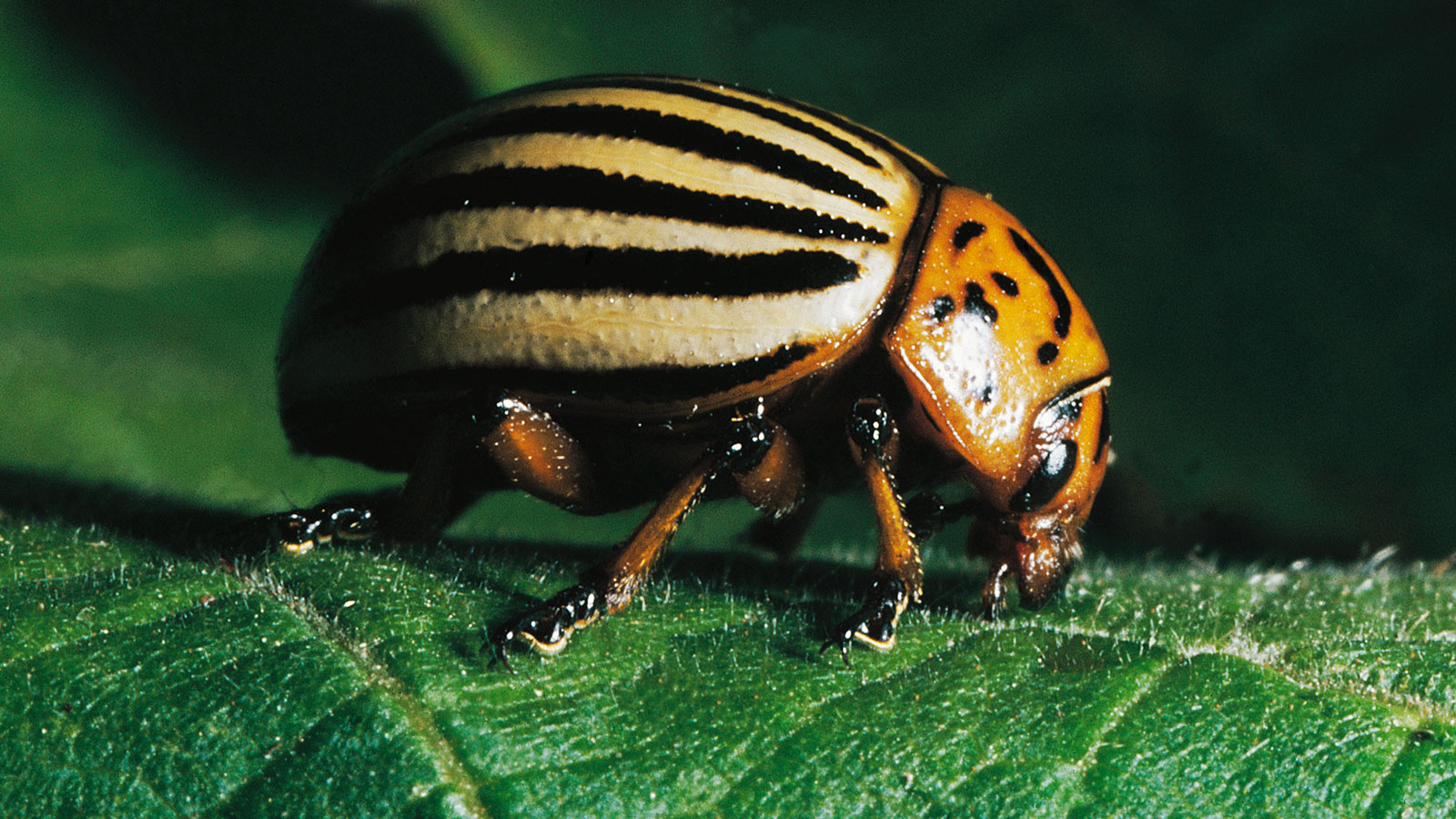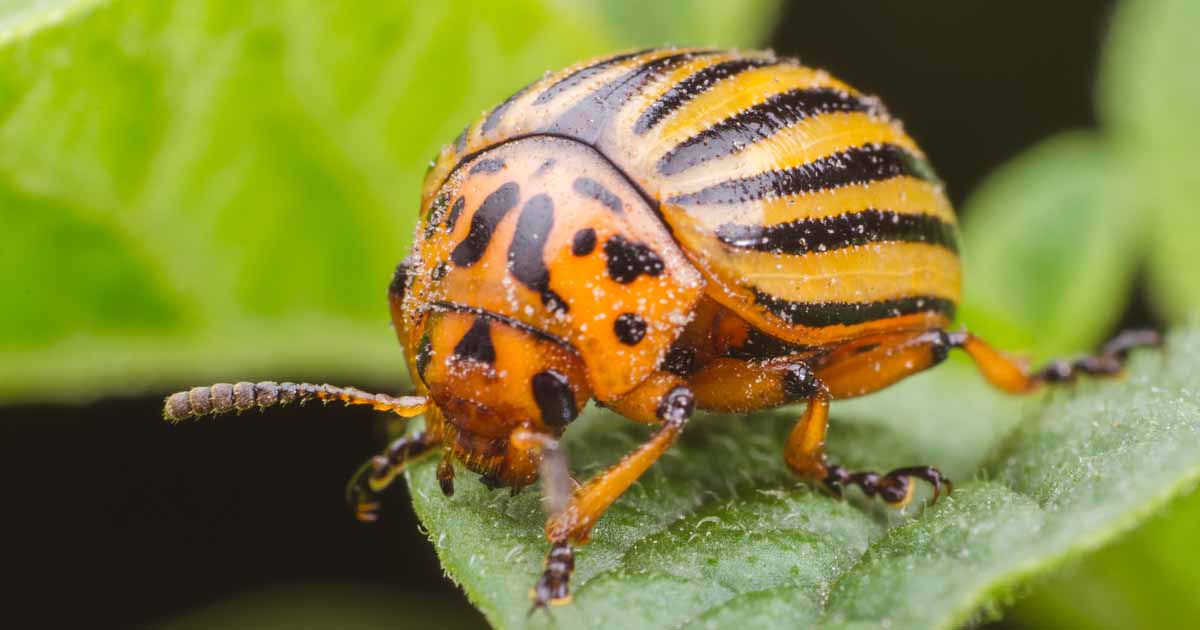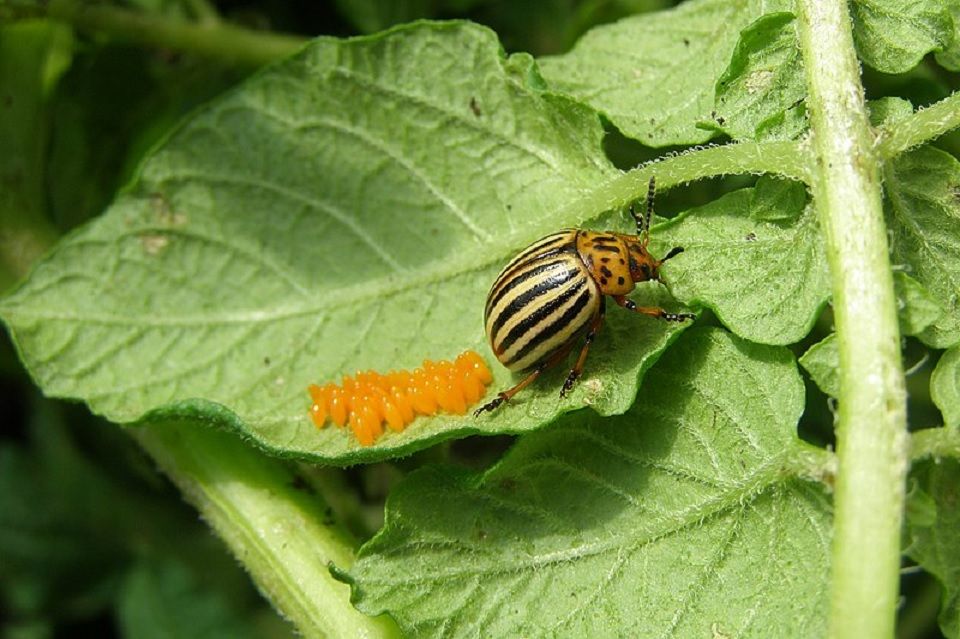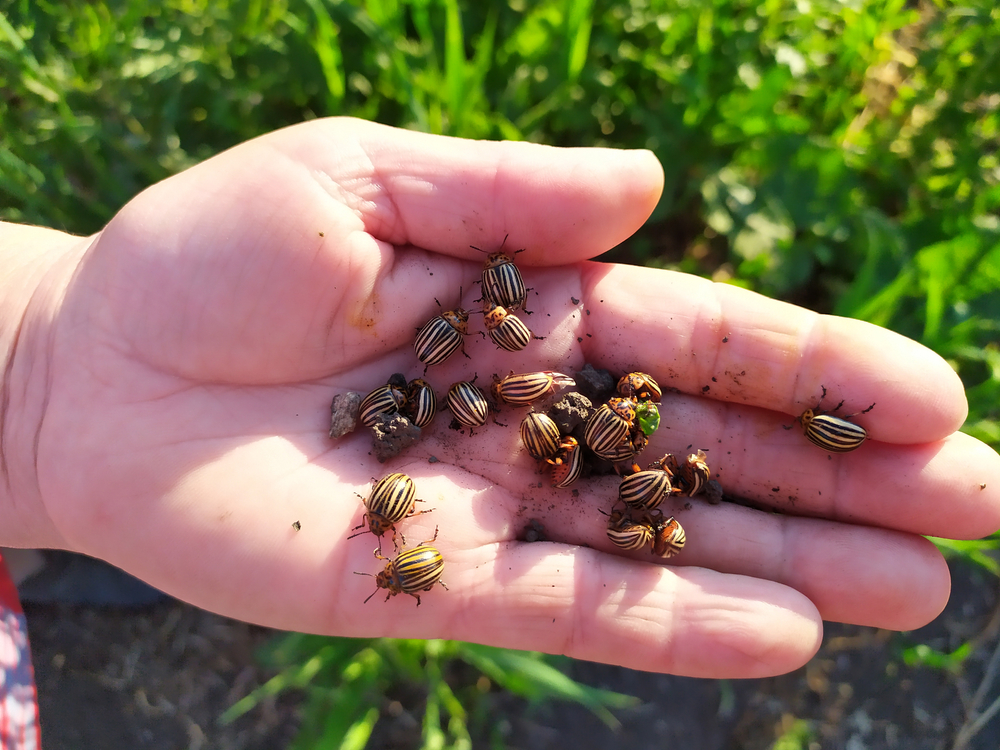
The Colorado Potato Beetle, also known as the Colorado Beetle, is a major pest of potato crops. Its Latin name is Leptinotarsa decemlineata. But what we will talk about today is the unique and strange way this insect lives and stays away from other pests.
The potato beetle is about 3/8 of inch long, and has a bright yellow and orange body. They have five bold brown stripes along the length of the elytra.
If you have ever grown potatoes, you have probably seen the infestation of small and extra-terrestrial insects crawling on the surface of leaves and near the roots.
These beetles can be quite a mess for your potato plants. What makes them so special? Let’s talk about it.
If you are looking for strange defensive mechanisms in nature, look no further than the potato beetle. This tiny insect has developed quite a unique way to avoid being eaten by larger insects.
The larvae cover themselves in their own feces. And the dung is poisonous and the foul smell wards off predators.
Then, when the danger has passed, the beetle eats from the nightshade plant and it reuses the toxic substances produced by this in its feces.

Their defense is called a fecal shield. The feces is guided onto the back through a series of muscle contractions in the abdomen. Over time, it forms the shield.
During her adult life, a female potato bug lays up to 350 eggs, which last many weeks. Speaking of the eggs, they start to hatch within 2 weeks, depending on temperatures.
During spring, adults feed for a small time, and begin to mate and lay clusters of eggs. Larvae accumulate near the egg mass at a young stage and then move across the plant as they munch the foliage.
Their development ends within 10 days depending on the temperature. Yet, if the average temperature is near 60 F, it may take a month to finish development.
How does the diet look like? Well, speaking of potato beetles or potato bugs, their diet includes insects, roots of vegetable crops, and potato tubers in the potato field.
They harm potato crops, but also other vegetables like tomatoes, peppers, and eggplants. They suck the juices from the foliage and stem of vegetables and fruits. This affects the growth of plants as the cricket leaves its toxic saliva behind. They do not have toxic glands and are not vicious.

While some gardeners consider them as pests, other view them as beneficial. Potato bugs are great for eating away dead roots and other decaying organic matter in the garden.
Here is a fun fact about the potato beetle. During Cold War, countries in the Warsaw Pact claimed that the beetles had been introduced by the CIA.
The attempt was to reduce food security by destroying the architecture of the Soviet Union. There was even a widespread campaign launched against the beetles. Governments put posters up. School children were mobilized to gather the pests and kill them.
There are two non-toxic ways to kill potato bugs. One is to use food-grade diatomaceous earth dust near the garden. It is a natural powder from fossilized remains of a kind of algae that can destruct the insect’s exoskeleton. It will make the pugs dry and die.
Another way is to use Neem oil, which is safe for humans and has low toxicity to plants. It is effective in controlling bugs by making it into an insecticidal spray.
For the spray, you need to mix water, Neem oil, and Castile soap. Spray on the areas where you spot the bugs.

In this documentary, we talk about hidden caves in Canada. The country is famous for its beautiful scenery, but that is usually because of the lakes and mountains. Not a lot of peo...
Dogs, Latin name Canis familiaris, are a direct descendent of the gray wolf, Canis Lupus. In other words, dogs are domesticated wolves. Their behavior has changed over the years.No...
Do you know your cat? When she is not purring on your living room sofa - do you know where she roams? Do you know where she wanders off once she leaves the premises? No? Well, woul...
Cheetahs are the fastest animals on Earth. They can reach a top speed of 68 to 75 mph, or 110 to 120 kmh. That is a lot. Some vehicles doesn’t reach that top speed.But how does t...